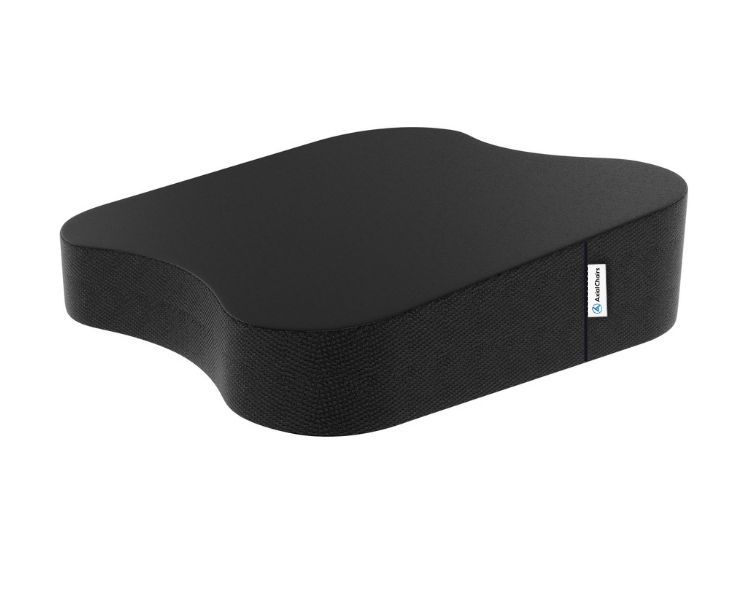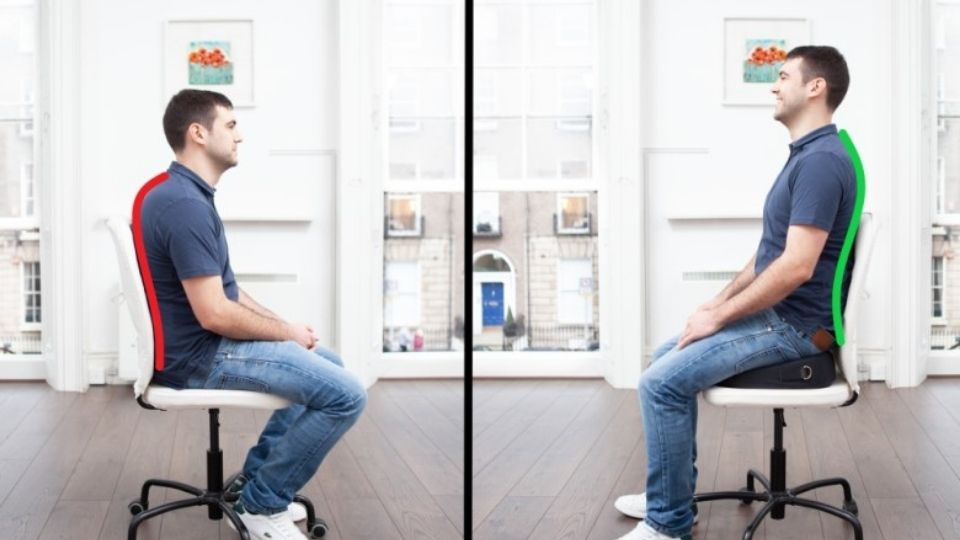Are you constantly dealing with discomfort and pain near your shoulder blades? Do those aches keep getting worse no matter what you do? If so, then it could be a symptom of an underlying issue. In this blog post we will help identify the possible causes for this kind of back pain near your shoulder blade, as well as provide information on how to treat it. We will also discuss why seeing a qualified physician is important in order to effectively manage and minimize any potential negative side effects from improperly self-treating such an issue. Read on to learn more about why understanding the cause of your back pain can make all the difference!
As a general rule, back pain near shoulder blade is a common condition that may be caused by a variety of factors such as poor posture, muscle strains, or injuries. Other potential causes can include spinal issues, osteoarthritis, or nerve compression. It is important to identify the underlying cause in order to prevent future occurrences.
As someone who has been practicing chiropractic for over 30 years and trained as an ergonomist, I have the experience and expertise to guide you through the best office chair alternatives for back pain. I have written a book on posture, spoken on this subject on national TV, and have even engineered solutions to help people achieve better posture and comfort while sitting. Recently, I ran a successful Kickstarter campaign to fund the development of my latest project, a set of ergonomic seat cushions.
Common Causes of Pain Near the Shoulder Blade
There are several factors that can contribute to pain near the shoulder blade. Some common causes include muscle strain, rotator cuff injuries, and poor posture. In some cases, issues with the neck or spine, such as a herniated disc or degenerative disc disease, may also lead to discomfort in this area.
How Chiropractic Care Can Help
Chiropractic care is a non-invasive, holistic approach to treating pain near the shoulder blade. By evaluating your spine and assessing your overall health, a chiropractor can identify the root cause of your discomfort and recommend a personalized treatment plan. This may involve spinal adjustments, soft tissue therapies, and exercises to improve posture and muscle balance.
Importance of Proper Posture
Maintaining proper posture is essential for preventing and alleviating pain near the shoulder blade. Sitting or standing with a slouched posture can strain the muscles around your shoulder blade, leading to discomfort. To maintain proper alignment, focus on keeping your shoulders back and down, your head up, and your spine in a neutral position.
All Day Comfort & Support
Stretching and Strengthening Exercises
Incorporating stretching and strengthening exercises into your daily routine can help improve the function of the muscles around your shoulder blade, reducing pain and discomfort. Some effective exercises include shoulder blade squeezes, thoracic extensions, and doorway chest stretches. Remember to consult with a chiropractor or a qualified healthcare professional before starting any exercise program.

The Importance of Early Intervention
If you’re experiencing pain near your shoulder blade, it’s essential to seek help from a chiropractor or another healthcare professional as soon as possible. Early intervention can help identify the cause of your pain, prevent the issue from worsening, and facilitate a quicker recovery.
I’ve written a complete hands-on review about the best sitting position for sciatica, and here is what I tested best with my sciatica patients.
Right Shoulder Blade Pain Female: Experiencing Pain, Muscle Strain, and Inflammation
Right shoulder blade pain in females may be caused by a variety of factors such as muscle strain, inflammation, or poor posture. Overuse or injury can lead to muscle strains and inflammation, which can be treated with rest, ice, and over-the-counter pain medication. Maintaining proper posture while sitting and standing can help prevent pain in the shoulder area. If the pain persists, consult a medical professional for a proper diagnosis and treatment plan.
Back Shoulder Pain Left Side: Poor Posture, Disc Herniation, and Lifemd Solutions
Back shoulder pain on the left side can result from poor posture, disc herniation, or other underlying issues. Slouching or sitting improperly can cause strain on the back and shoulder muscles, leading to discomfort. Disc herniation occurs when the cushioning between the spinal vertebrae is pushed out, causing pain and nerve irritation. Lifemd, an online platform, offers a range of healthcare services, including consultations and treatment options for back and shoulder pain.
Stabbing Pain Under Left Shoulder Blade: Inflamed Muscles, Back Pain, and Possible Causes
A stabbing pain under the left shoulder blade could be caused by inflamed muscles, back pain, or other conditions such as a pinched nerve or muscle strain. If the pain is accompanied by other symptoms like shortness of breath or chest pain, it could be a sign of a more serious issue, such as a heart or lung problem. It is crucial to consult a healthcare professional to determine the underlying cause and receive appropriate treatment.
Stabbing Pain Under Right Shoulder Blade: Back Pain, Muscle Strain, and Disc Herniation Factors
Stabbing pain under the right shoulder blade may be due to back pain, muscle strain, or disc herniation. Overexertion or injury can lead to muscle strains, while poor posture can contribute to back pain. Disc herniation, a condition where the spinal disc protrudes, can also cause stabbing pain in the shoulder area. If the pain is persistent or severe, consult a healthcare provider for diagnosis and treatment.
Is Shoulder Blade Pain a Sign of Cancer? Exploring Shoulder Pain, Back Pain, and Related Symptoms
While shoulder blade pain can be caused by various factors such as muscle strains, poor posture, or inflammation, it is not always a sign of cancer. However, in rare cases, persistent shoulder pain can be associated with lung cancer or metastatic cancer that has spread to the bones. If you have persistent, unexplained shoulder blade pain or additional symptoms such as weight loss, fatigue, or persistent cough, it is essential to consult a healthcare professional to rule out cancer or other serious conditions.
Best Seat Cushion for Back SupportAxial Ergonomic Seat Cushion® | Seat Chair Wedge
Quick Guide: A 30-Second Summary

All Day Comfort & Support
Product Name
Axial Designs™ Seat Cushion
Price
$149
Warranty
1 Year
Type
Posture Wedge
Top Layer
100% Natural Latex (Molded)
Bottom Layer
High-Density Foam
Top Material
Isometric Grippy Vegan Leather
Bottom Material
Non-Slip Material
Side Material
3D Breathable Fabric
Establishing an Ergonomic Seating Environment: Pointers and Advice
To effectively address your seating requirements, it’s vital to concentrate on multiple factors, particularly chair customization. There are various techniques to accomplish this, such as introducing an ergonomic cushion and lumbar support. These accessories can relieve pressure on your back and legs, augmenting comfort and posture during long sitting durations. Furthermore, confirm that your feet are flat on the floor and that there is adequate clearance between your chair and work surface. By adhering to these pieces of advice, any typical hard chair can be transformed into an ergonomic refuge that fosters long-term health and well-being.
Ergonomic Posture Cushion
An ergonomic seat wedge (above) can be employed to correctly align your spine and promote stability. This superior natural latex posture cushion contributes to strengthening core muscles while reducing tension in other areas of the body, such as the shoulders and neck. Besides, maintaining an upright seated position is kinder to your hips and knees, as it engages more muscle groups simultaneously compared to leaning back against something soft. This upright posture helps to avert stress-inducing habits that individuals might unwittingly adopt while working.
Final Thoughts
Understanding the causes and symptoms of back pain near the shoulder blade can help you to figure out what type of treatments might be necessary for your own condition. While, in some cases, more serious care may be needed, simple stretches and physical therapy can help reduce pain in the short term with perseverance.
When it comes down to it, consistently listening to your body will help you determine if the time is right for searching out professional medical advice from a doctor or specialist. Above all, remember to stay positive and proactive while actively attempting methods of reducing your back pain near the shoulder blade. Seek out holistic methods that meet your needs with a caring tone of voice and a motivated attitude. With consistency and dedication towards self-care maintenance practices, you’re sure to see a long-term reduction in back pain near the shoulder blade.









